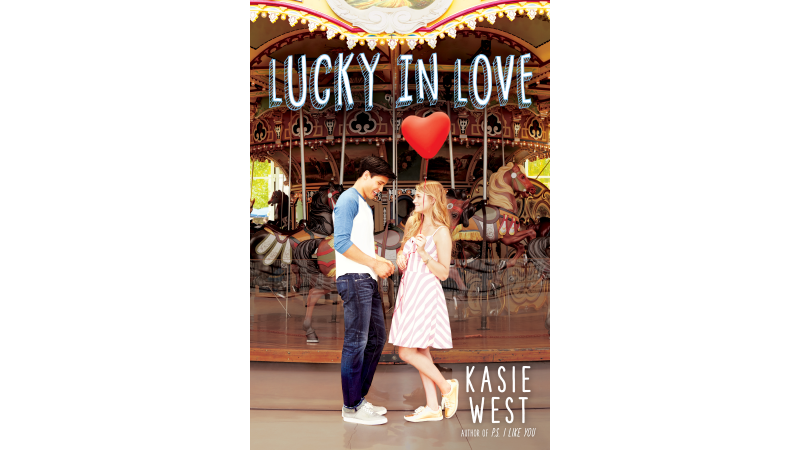 It’s Read a Romance Month, a time to celebrate love stories in books! Kasie West—the author of books for teens like P.S. I Like You and Lucky in Love (Ages 12 and up)—stopped by OOM to share her tips for how to write the perfect kissing scene. Check out her advice below, and let us know what books you’re reading to get in the Read a Romance Month mood!
It’s Read a Romance Month, a time to celebrate love stories in books! Kasie West—the author of books for teens like P.S. I Like You and Lucky in Love (Ages 12 and up)—stopped by OOM to share her tips for how to write the perfect kissing scene. Check out her advice below, and let us know what books you’re reading to get in the Read a Romance Month mood!
Do you remember when you were a kid, how you’d take Barbie’s and Ken’s heads and smash them together because you had no idea how to kiss but you knew it must involve full facial contact? No? Am I the only one that did that? I guess I was always destined to write romance. But here’s the thing I had to learn when I grew up: kissing needs context. Sure there are times I’d love to just smash my characters faces together and get on with it, but writing a good kiss involves so much more than that. So what makes a good kissing scene?
Number One: Personal History. A good kiss starts way before lips ever touch. A reader has to want it to happen just as much as the character does. How do you make a reader want it? Give the reader a reason to root for your character. For example: “Her only kiss, the result of a dare, was given to her in a dark closet by a boy who wished he was kissing her best friend instead.” Ouch. That’s some sad personal history. And this history doesn’t have to be just kissing history to win over a reader’s loyalty. Another example: “That was the bus stop where he’d stood in the rain for three hours because his parents forgot about him.” Sounds like both of these characters deserve some goodness in their lives.
Number Two: Build-up. Have the characters spend time together not kissing. Have them not kiss the crap out of each other. Their pasts have been laid out, we now need them to make some history together on the page. They don’t even have to be almost-kissing for this build-up to resonate with your readers. “Next on their scavenger hunt list was ‘ten spiders in a glass jar’. She shuddered at the thought but met his eyes. They were both too competitive to wimp out now.”
Number Three: Tension. There are obviously reasons — from page one of the book up until the inevitable kiss — why the characters aren’t, in fact, kissing. These need to be good reasons. Conflicts. Maybe they hate each other. Maybe they are off-limits to each other. Maybe the feelings aren’t reciprocated. Whatever the conflict, it makes your reader want the kiss that much more. “He couldn’t look at her like that, had never looked at her like that before. She was his best friend’s sister.”
Number Four: Emotions. Hopefully, with the use of all of these devices, you’ve tugged at your readers’ emotions, made them feel things, made them long for the payoff. The characters also need to share their emotions. The readers’ emotions combined with the characters’ emotions is the perfect time for the kiss to happen. “Her heart was beating so fast she couldn’t get a decent breath. His head that just seconds before had been full of unasked-for thoughts was now buzzing with anticipation. She felt his breath on her cheeks. He watched her eyelids flutter, then close. Then their lips met.”



